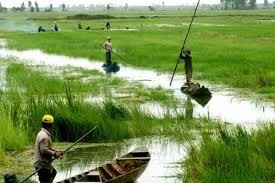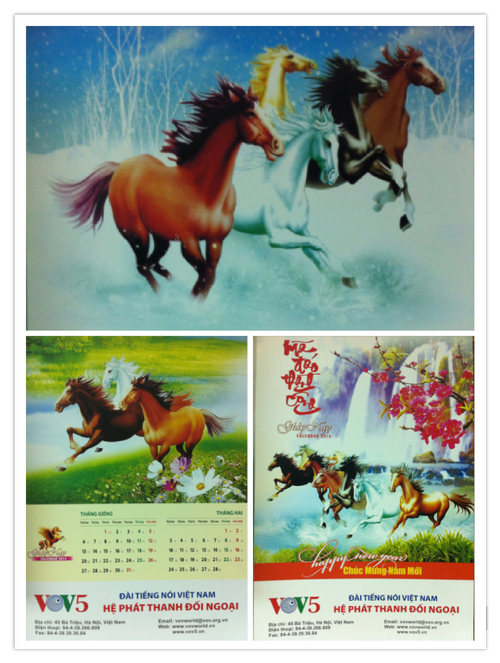(VOVworld) - To begin this week’s Letter Box, I’d like to welcome new listener Andy Chang of Davis, California, in the US. He listened to VOV on November 4 and 11 at 6175 khz. He noted heavy interference from Radio Havana on 6165 khz. He said it was very difficult to hear the signal and he could only hear fragments of a few words.
B: We checked the attached recordings you sent, Andy, and heard the loud music from the frequency of 6165 khz interfering with our signal. Thank you very much for your reception report. It’s very useful to us in monitoring our signal to the US, especially California. We’ll foreword your report to our technicians and hope they can do something to improve your reception.
A: Here’s an email from Allan Fenix of the US who listened to our program on November 5. He used a Sangean ATS-909x with a whip antenna to listen to VOV’s program at 6175 khz with a good signal and no interefence.
B: Allend said he visited Vietnam in August, 2012 for 3 days. He said: “I saw the Mekong Delta and the war tunnels. Every time I listen to VOV’s broadcast, I always remember those memorable days.”
A: We’re delighted to know that the trip to Vietnam’s Mekong Delta left a strong impression on you and that VOV’s programs remind you of those days. A three-day trip is rather a short time to gain an understanding of present-day Vietnam. VOV’s programs can bring you up to date on our current political and economic developments, cultural and tourism attractions, and many other things.

Boat is the main means of transportation in the Mekong Delta |
B: Allen said in his place of Thibodaux, Louisiana, nobody listens to the radio any more. He wanted to know how many reception reports we receive from the US each year. Every month, we get about 50 letters and emails from the US. The number of emails outnumbers post mails more and more each year. We begin correspondence with new listeners from the US every year, mostly young people. I know that many universities in the US have radio clubs and their members listen to shortwave stations as a hobby or an extra-curricular project.
A: With more new listeners from around the world every year, VOV is determined to keep up its shortwave broadcasts in addition to developing multi-media to stay abreast of social trends. Now here’s an answer to a question from Tjang Pak Ning of Indonesia about Vietnam’s rail system. Our railway system is operated by the state-owned Vietnam Railways. The total length of the railway lines is 2,600 km and the principal route is about 1,800 km of the single-track North-South Railway line which runs between Hanoi and Ho Chi Minh City. This was built in the 1880s during French colonial rule. A Hanoi-Ho Chi Minh railway ticket costs around 60 USD depending on whether your car has soft or hard beds, with or without air-conditioning and meals.

The north-south train
|
B: There is a standard gauge line running from Hanoi to China, eventually leading to Beijing, and some mixed gauge in and around Hanoi. The entire Hanoi-Beijing run is about 3,000 km and takes approximately 48 hours, including a three-hour delay at the border checkpoint. The Vietnam-China cross border railway section is the Hai Phong – Yunnan route, which is 855 km long and runs through Huu Nghi Quan Friendship Pass.
A: China, Vietnam, Lao, Thailand, Cambodia and Myanmar approved a joint program to build a railway connecting the 300 million people who live in the Mekong Delta. The whole system will connect to Singapore. The project is expected to be completed in 2020.
B: Tjang Pak Ning, there are many more things to say about Vietnam’s railway system and we welcome your specific questions. We hope you’ll keep in touch and continue to send us your feedback.
A: Let’s continue with letters from other listeners. Rana Dewan Rafikul of Bangladesh informed us that December 16 is Bangladesh’s National Day and his club is preparing some activities to celebrate. Congratulations Rafikul! We’ll send you some VOV souvenirs including a 2014 calendar for your DX club’s exhibit on that special day.

Some pages in VOV's 2014 calendar
|
B: Another regular listener from Bangladesh, Ashik Eqbal Tokon, reported listening to our Letter Box on November 13, which discussed the Vietnamese Tea Festival. Ashik said tea is also one of his country’s favorite drinks and it’s easy to find a tea shop ready to serve a cup of hot tea everywhere you go.
A: The program on November 14 impressed him with news about Vietnam’s membership on the UN Human Rights Council, the adoption of e-customs in customs offices across Vietnam, and the pottery museum in Kim Lan village. Ashik said it’s great to know that Vietnam has 120 museums.
B: He wrote in another email on November 21: “Due to my office’s business, I was unable to keep in touch with you over the last couple of days. But I never missed you on my pocket receiver SW dial. Thanks for your excellent Letter Box last night. From the show I came to know about Vietnam Teachers’ Day. Please convey my greetings to all the teachers.”
B: Thank you, Ashik, for your lovely and thoughtful e-greeting card, which said “A teacher’s purpose is not to create students in his own image, but to develop students who can create their own image. Thanks for creating Vietnam’s image in my mind, VOV.”
A: We want to acknowledge a report from Thomas Cocoran of Sweden who was interested in information about Vietnam Teachers’ Day. He wrote: “Thank you very much for today’s program which was heard loud and clear in the very south of Sweden on 5955 khz. It was heartening for me to learn that Vietnam honors its teachers. Such is not the case in all countries.”
B: From India, Muhammad Shamim asked about Vietnam’s national tree. We have a national flower rather than a national tree. On some previous Letter Box editions, we talked about the selection of the lotus as Vietnam’s national flower, its cultural meaning and values. Please take some time to listen again to reports on Vietnam’s national flower on our July 31 and October 9 editions.
A: He asked another question about the type of electricity we have in Vietnam. Electricity in Vietnam is 220 Volts AC, alternating at 50 cycles per second. If you travel to Vietnam with a device that does not accept 220 Volts at 50 Hertz, you will need a voltage converter. Outlets in Vietnam generally accept 3 types of plug: two flat blades, two round pins, or two parallel flat blades with a ground pin. In Vietnam it’s easy to find an electric supply shop selling converters and plug adapters.
B: Finally on this week’s Letter Box, we’d like to mention that we have updated the addresses of George Viera of New Jersey, in the US, and Enzo Pistone of Italy. That’s it for today’s Letter Box. We welcome your feedback at: English section, Overseas Service, Radio Voice of Vietnam, 45 Ba Trieu Street, Hanoi, Vietnam. Or you can email us at: englishsection@vov.org.vn. You’re invited to visit us online at www.vovworld.vn, where you can hear both live and recorded programs. Thanks for being with us. Goodbye.